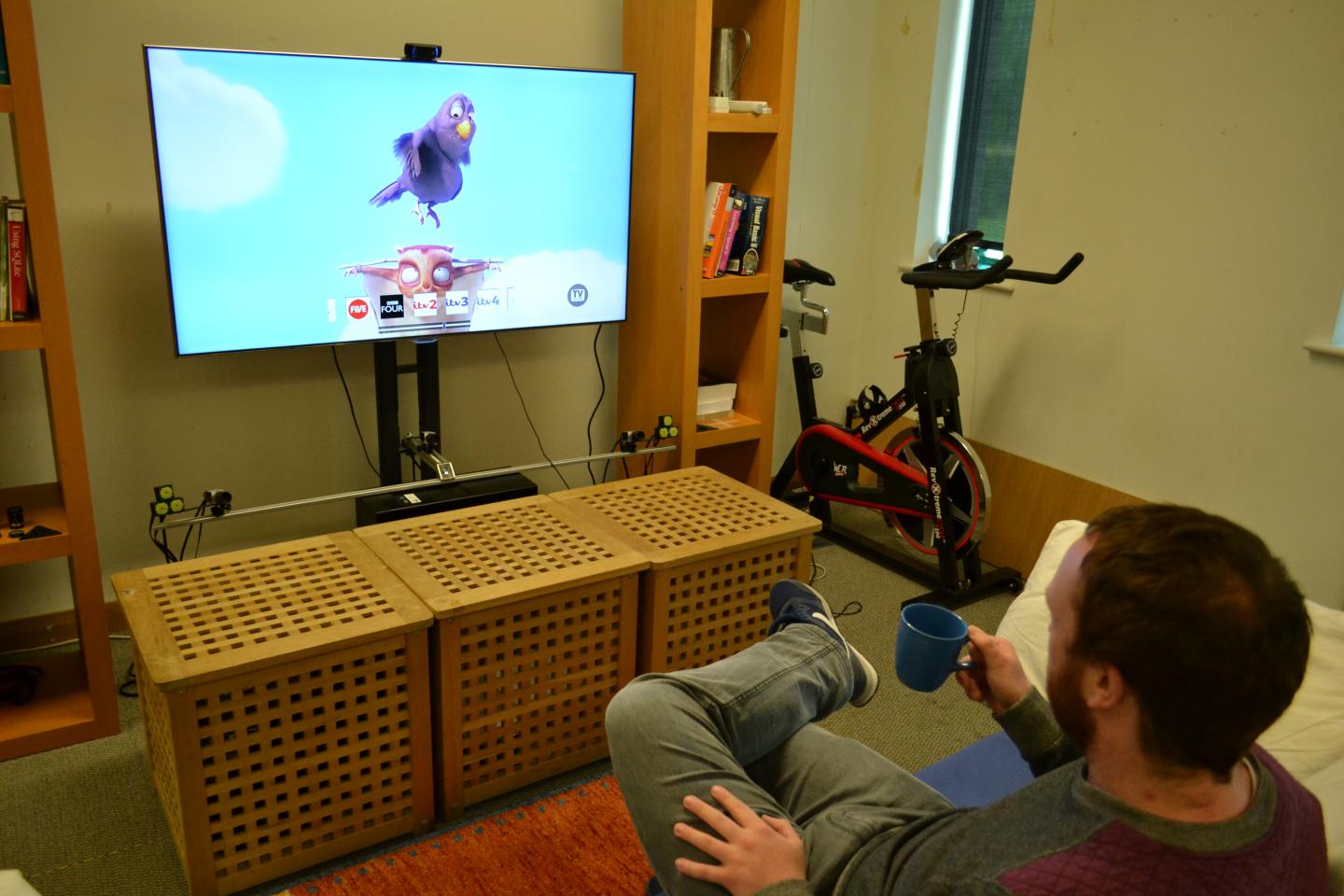A webcam-based technology promises to enable device control using any handy object, from a cup of tea to an obliging pet. Developed by computer scientists at Lancaster University, the technique — named “Matchpoint” by its developers — works by creating a temporary link between movement detected by the visual system with the function of any device with a screen.

Gesture control has been achieved with televisions and other devices before, but systems generally need to be ‘trained’ to recognise a specific body part, or users must learn a defined series of movements to achieve their desired result. Matchpoint avoids both of these situations by looking for a rotating motion within the webcam’s fields of view.
Matchpoint displays a series of moving targets that orbit a widget in the corner of the screen. These targets correspond to functions, such as adjusting the volume, changing channel, or displaying a menu. The users synchronises the direction of movement of one of the graphical targets with a movement of their head, hand or a real-world object, and this creates what the researchers call “spontaneous spatial coupling” between the body part or object and the device’s operating system. If they select volume or channel selection, a slider appears on the screen, and the user makes a linear motion in the appropriate direction to achieve their desired effect.
Lead researcher Christopher Clarke, a PhD student, and his supervisor Prof Hans Gellerson, who are to present this research at the upcoming User Interface Software and Technology Symposium later this month in Quebec City, Canada, have built in options that allow the linkages between function and object to vary in duration. For example, a mug on a table can be designated to change tracks on a music player, or a toy car can be rolled along to adjust volume. Removing the object from the camera’s fields of view breaks the link.
The technology can also be used with screens displaying tutorials, such as cooking instructions or device maintenance in an industrial setting. Coupling such displays to tools can be used to pause or replay sections of instructions. Multiple pointers can be created to allow more than one user to point at drawings or pictures on interactive whiteboards simultaneously. Matchpoint also allows users to manipulate images on whiteboards by using two hands to zoom in and out, and rotate images.
“Our method allows for a much more user-friendly experience where you can change channels without having to put down your drink, or change your position, whether that is relaxing on the sofa or standing in the kitchen following a recipe,” Clarke said. “Everyday objects in the house can now easily become remote controls so there are no more frantic searches for remote controls when your favourite programme is about to start on another channel, and now everyone in the room has the 'remote'. You could even change the channel with your pet cat.” Whether the cat would acquiesce is another matter.




Poll: Should the UK’s railways be renationalised?
All public service companies should be nationalised for many different reasons, particularly railways, not the least because the tax payer has already...